The Bravia 8 is Sony’s flagship OLED model for 2024, aimed at attracting image quality enthusiasts. This television delivers outstanding picture quality with OLED’s hallmark deep blacks, vivid, precise colours, and infinite contrast, creating a highly realistic viewing experience. Dark scenes are presented with perfect black levels, while brighter elements are rendered with impressive detail, giving each frame a distinctive cinematic feel. With a 120 Hz refresh rate, the Bravia 8 ensures excellent motion fluidity, making it ideal for sports, gaming, and fast-paced movie scenes. Its ability to provide a ghost-free image allows viewers to appreciate fine details even during rapid action sequences, a feature that will particularly appeal to fans of dynamic content. Running on the Google TV platform, the Bravia 8 offers an intuitive, fast, and user-friendly interface. This system provides seamless access to popular applications and favourite content. The clear and responsive interface enhances the viewing experience, making navigation smooth and straightforward. The practical, backlit remote control adds further convenience and can be charged via USB-C, distinguishing it from traditional battery-powered remotes. This thoughtful design ensures easy use, even in low-light conditions. However, despite its strengths, the Bravia 8 does have some limitations. With an SDR brightness level of 330 nits, it may not perform optimally in very bright rooms, potentially leading to reflections or a less vivid display in strong ambient light. Users who valued the superior gradation in earlier Sony models may find this a minor drawback. Additionally, the television features only two HDMI 2.1 ports, which could be limiting for gamers who use multiple consoles or other high-bandwidth devices. Overall, the Sony Bravia 8 is a premium OLED television that excels in most areas. Its superb picture quality, advanced gaming features, and solid sound performance make it an excellent choice for a reliable OLED model in 2024. While there are some areas for improvement, particularly in SDR brightness and connectivity, the Bravia 8’s overall performance and features make it a compelling option for both everyday use and immersive viewing experiences.
- Matching (Score)
- Our verdict
- TV appearance
- Where to buy
- Contrast and black detail
- HDR effect quality
- Factory color reproduction
- Color reproduction after calibration
- Smoothness of tonal transitions
- Image scaling and smoothness of tonal transitions
- Blur and motion smoothness
- Console compatibility and gaming features
- Input lag
- Compatibility with PC
- Viewing angles
- TV efficiency during daytime
- Details about the matrix
- TV features
- Apps
- Playing files from USB
- Sound
Sony Bravia 8 (XR80) vs LG OLED C5
Direct compare
Check the best price offer:
Sony Bravia 8 (XR80)Check the best price offer:
LG OLED C5BRAVIA 8 / XR80
C54 / C5ELB / C51

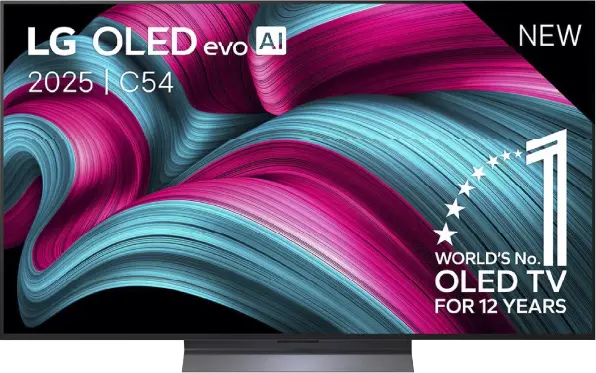
Panel type: WRGB OLED
Resolution: 3840x2160
System: Google TV
Model year: 2024
Complete the survey to find out the result

Panel type: WRGB OLED
Resolution: 3840x2160
System: WebOS
Model year: 2025
Complete the survey to find out the result

Overall rating
7.8
8.2
Movies and series in UHD quality
7.6
8.5
Classic TV, YouTube
8.0
8.9
Sports broadcasts (TV and apps)
8.1
8.6
Gaming on console
8.8
9.4
TV as a computer monitor
7.6
8.6
Watching in bright light
5.6
6.2
Utility functions
9.4
7.9
Apps
9.6
9.1
Sound quality
7.5
7.2
Complete the survey to find out what fits your preferences
Advantages
Excellent contrast
Google TV – intuitive system, easy access to applications, backlit remote.
Very good motion smoothness – 120 Hz, advanced smoothing system.
Great Dolby Vision support
Very good viewing angles
Superb built-in audio system
Great black and infinite contrast thanks to the OLED panel
Above-average brightness (for an OLED TV)
Almost reference image quality after calibration
Full package of features for gamers: 4x HDMI 2.1, low input lag, HGiG, VRR, and more
Very good image fluidity – 144 Hz OLED panel
Intuitive and modern WebOS system
Convenient control with the Magic remote with gyroscope
Disadvantages
Poor gradation – visible connections on dark and light colors
Brightness during the day – better for night sessions than for use in daylight
Only 2 HDMI 2.1 ports - one of which is ARC.
Different versions of the remote in derivative models – it's hard to predict which version we will get
Average reflection damping – this can be distracting in very bright light
No support for DTS:X – an external amplifier is required for full support of this format
Our verdict
LG C5 is a very successful continuation, and in several aspects, even a step forward compared to last year's model C4. The biggest change is the noticeably higher brightness – for the first time in the history of the C series, the barrier of 1000 nits has been surpassed, which significantly improves the quality of the HDR effect. Both movies and shows look more dynamic because of this, and bright scenes finally have the appropriate “shine.” After calibration, the image quality is almost reference-level, and one might feel like we are dealing with equipment much more expensive than its price suggests. C5 is also one of the best choices for gamers – four full HDMI 2.1 ports, low input lag, support for VRR, G-Sync, and properly implemented HGiG. Additionally, the 144 Hz panel makes not only gaming but also watching sports a pure pleasure. The convenient WebOS system and Magic remote with cursor control function deserve praise as well – everything works smoothly and intuitively. This is a TV that you simply want to use.
However, there are a few minor reservations. This year, LG decided to drop support for DTS codecs, which may be problematic for those using physical media and Blu-ray movie collections. It's also worth noting the confusion surrounding different versions of the remote – depending on the model designation, we may receive a completely different remote than the one we held during our tests. Despite these few remarks, LG C5 is a TV that impresses in almost every aspect. Brightness, colors, gaming features, image fluidity, and overall build quality make it one of the best OLEDs in its class.
TV appearance




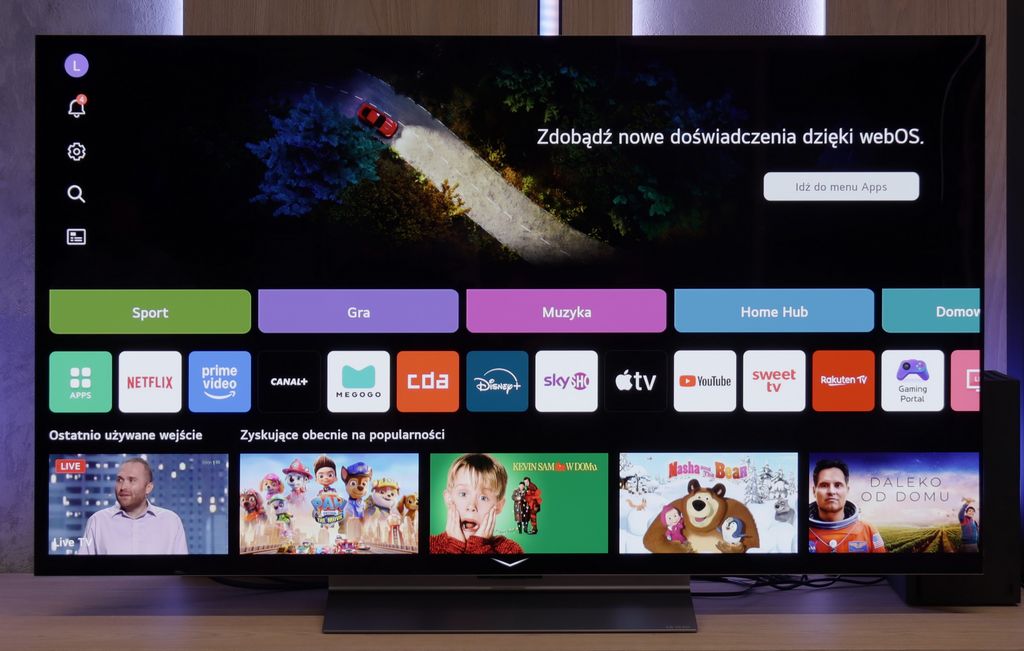
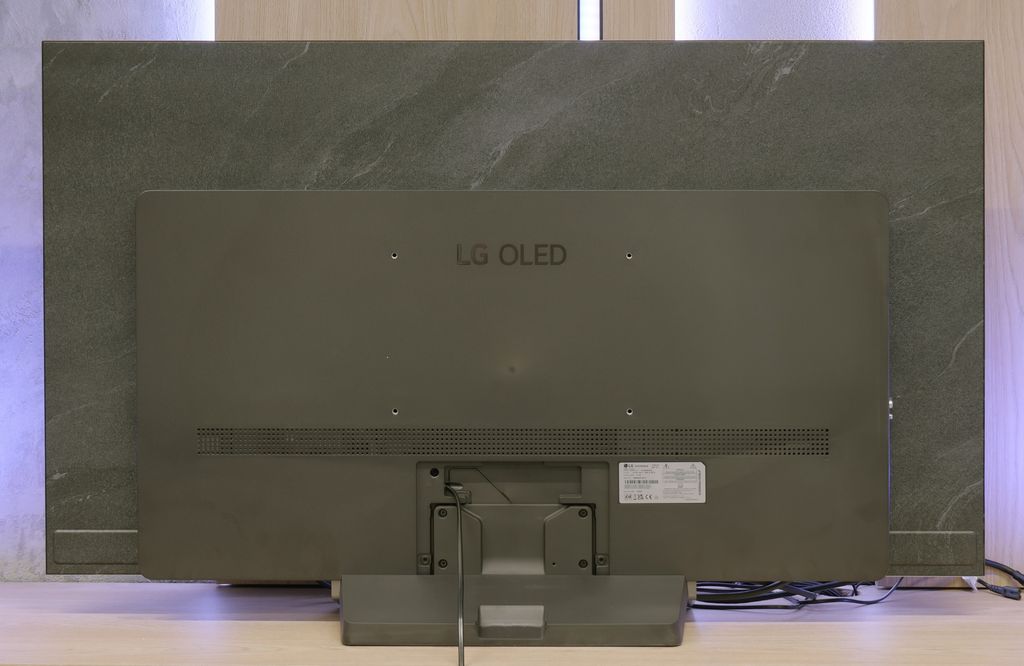
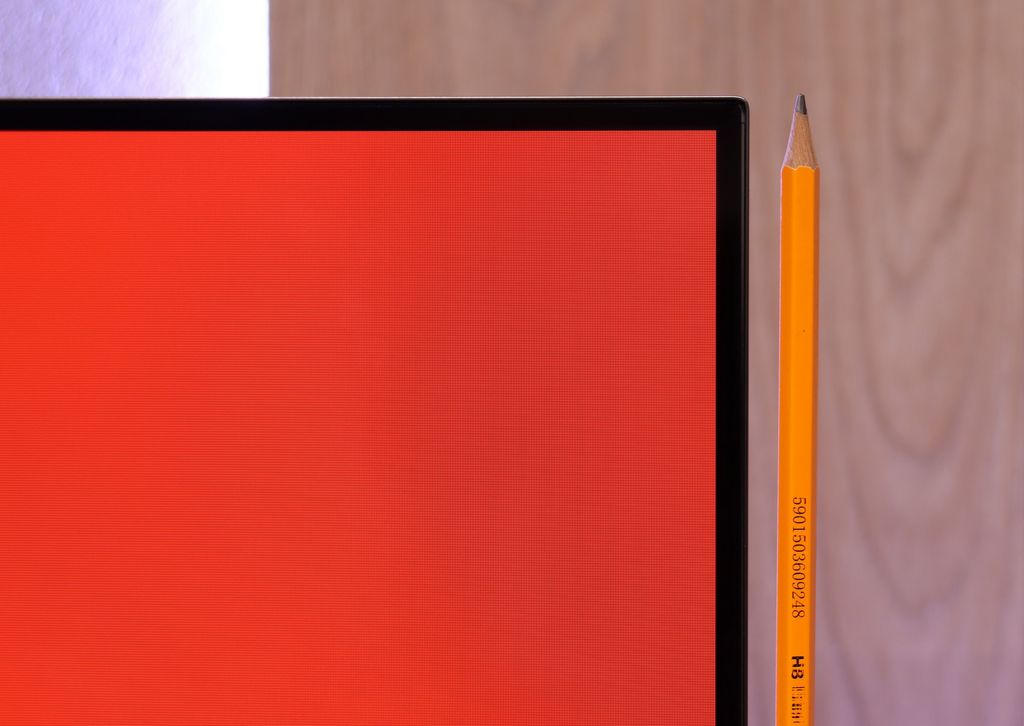
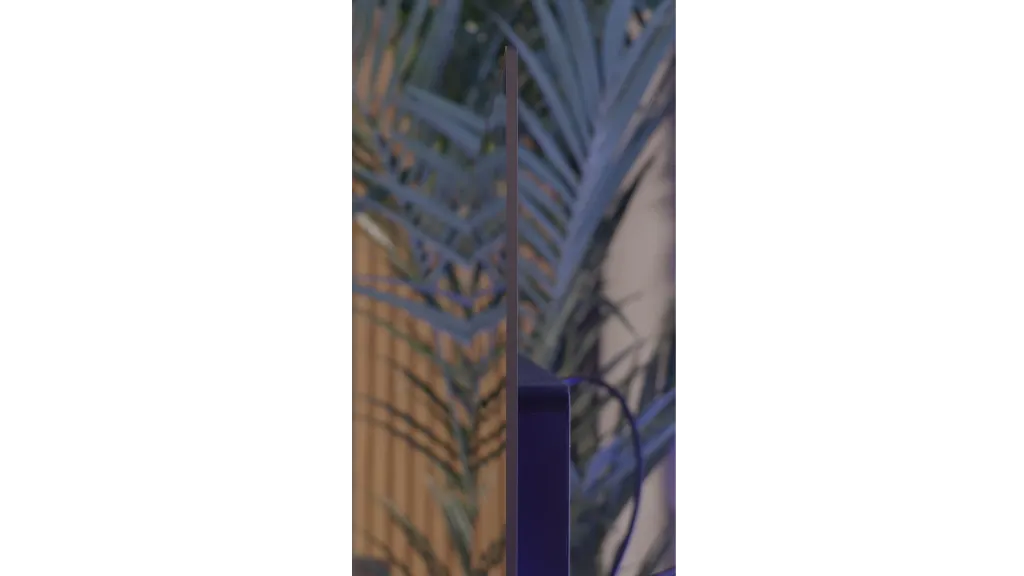
Where to buy
Contrast and black detail
10/10
10/10
Contrast:

Result
∞:1

Result
∞:1

Result
∞:1

Result
∞:1

Result
∞:1

Result
∞:1

Result
∞:1

Result
∞:1

Result
∞:1

Result
∞:1
Halo effect and black detail visibility:

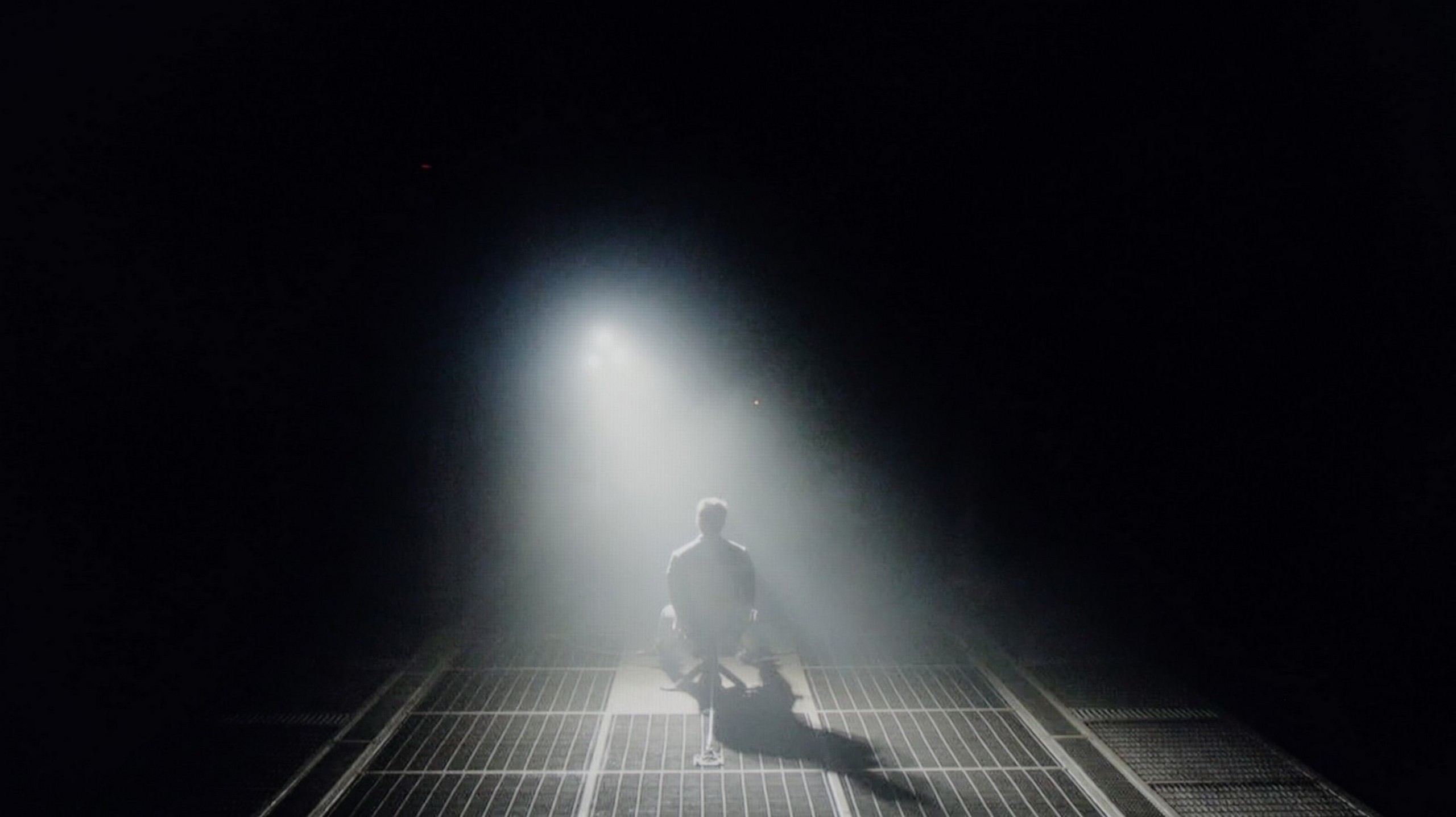
The Sony Bravia 8 television, equipped with an OLED matrix, delivers exceptional picture quality with outstanding black levels and contrast. Thanks to OLED technology, each pixel emits its own light, ensuring deep blacks and precise light reproduction. During testing with scenes from films like Oblivion and The Revenant, the Bravia 8 showcased impeccable separation between light and dark elements, producing detailed and lifelike images, even in challenging high-contrast scenarios. This performance places the Bravia 8 among the top models in its class.
In the category of black and contrast, the LG C5 fits into what we have come to expect from OLED TVs – it is simply perfect. Thanks to the use of an organic matrix (WOLED), each pixel shines independently, resulting in infinite contrast and perfect black. There are no halos, streaks, or other typical artifacts found in LCD TVs. Details in bright parts of the image are perfectly visible, and watching in the dark is pure pleasure. If someone is looking for a TV for evening viewings with great contrast – the C5 is a very strong candidate.
HDR effect quality
6.8/10
7.2/10
Luminance measurements in HDR:

Result
849 nit

Result
865 nit

Result
888 nit

Result
880 nit

Result
469 nit

Result
1079 nit

Result
1059 nit

Result
1120 nit

Result
1094 nit

Result
707 nit
Scene from the movie “Pan” (about 2800 nits)


Scene from the movie “Billy Lynn” (about 1100 nits)


Static HDR10


Dynamic: Dolby Vision
Dynamic: Dolby Vision


HDR luminance chart:
LG OLED C5
HDR luminance
Luminance of RGB colors
Sony Bravia 8 (XR80)
HDR luminance
Luminance of RGB colors
The Sony Bravia 8 performs commendably in terms of HDR brightness, reaching a peak of 880 nits. This level is sufficient to render lighting effects effectively in most scenes. In tested clips from Life of Pi and Sicario 2, the television demonstrated vibrant, detailed imagery that captured the atmosphere of these films beautifully.
However, challenges arise in scenes with consistently high brightness, such as in The Meg, where the display's limitations become apparent. In these situations, OLED technology can struggle, with brightness levels dropping to around 450 nits, which can be less satisfying when intense illumination is needed throughout a scene. Despite this, the Sony Bravia 8 remains a strong contender, offering excellent DCI-P3 colour gamut coverage and 74% BT.2020 coverage. These attributes result in rich, accurate colours and fine details, enhancing HDR content and providing an enjoyable viewing experience.
LG C5 finally does what we have been waiting for years in the C series – it exceeds 1000 nits of brightness! This is a significant change compared to previous models in the series and also very important – because this is exactly the level of luminance around which most HDR content is now created on streaming platforms. The image finally has the right “glow,” and details in bright areas look as they should even without the use of dynamic metadata. However, there are scenes where the C5, like most OLED televisions, has some issues. Especially when the screen needs to illuminate fully. In our test sequences, such as the bright scene from the movie The Meg, brightness clearly decreases. Don’t get us wrong, this result isn’t bad; it’s more of a reminder that OLED technology still has its limitations. They are getting smaller year by year, but still.
Now, what about the colors? They are very good. Although the C5 does not match the OLEDs with QD-OLED or Tandem RGB panels, the DCI-P3 coverage at 97% and 73% BT.2020 will satisfy even the most demanding viewers. The colors are saturated, natural, and very consistent in HDR materials.
Factory color reproduction
7.2/10
8.2/10


Factory Mode
After calibration

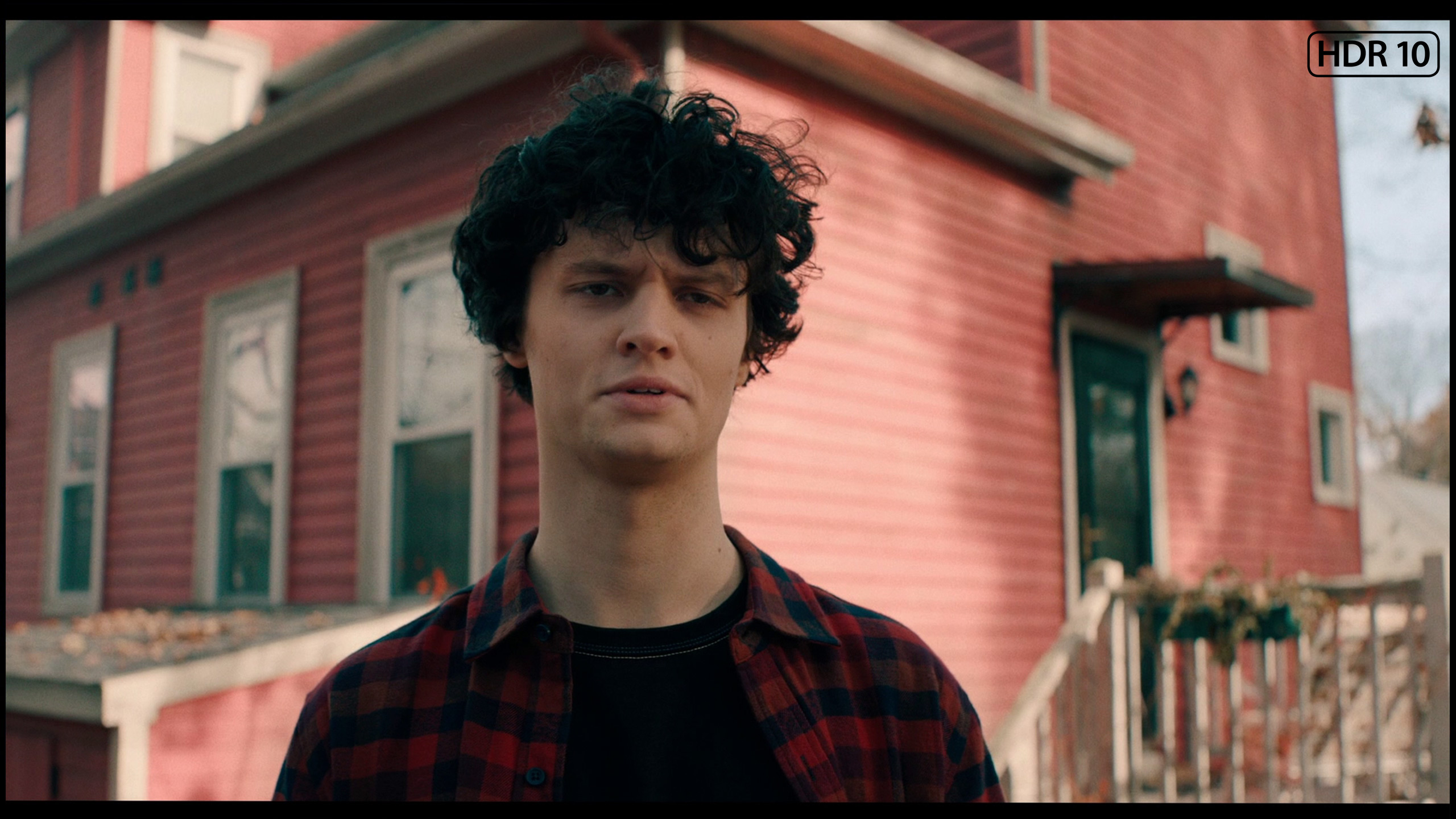
Factory Mode
After calibration
The best factory mode on the Sony Bravia 8 television is IMAX Enhanced, offering the most cinematic experience, though it isn't perfectly calibrated. The TV attempts to replicate cinematic settings as accurately as possible, but some issues are evident. Starting with white balance, both for SDR and 4K content, there is a noticeable blue dominance, making the image appear too cold and lacking in natural warmth. Colour Checker tests reveal a shift towards cooler tones, affecting colour accuracy and making the image feel less lifelike.
Regarding brightness and contrast, the gamma shows a significant drop towards the end of the spectrum, meaning dark details may become too shadowed, and bright areas too intense, causing a loss of subtlety and detail. This is particularly noticeable in the sky, as seen in the comparison image. Additionally, the EOTF curve is considerably above the reference value, making bright elements overly intense. As a result, users may experience an unnatural image, with bright parts losing detail and negatively impacting the overall viewing quality.
LG C5, like other TVs we tested, was checked in the best possible factory mode – which remains Filmmaker Mode. And here we have good news: in SDR materials, LG once again did a solid job. The white balance and color reproduction straight out of the box are at a very high level. Most errors – both in balance and in the color test (Colour Checker) – did not exceed a ΔE value of 3, which is the threshold above which differences become visible to the naked eye. Such factory settings are something we would like to see in many more TVs!
However, the situation is different for HDR content, which is really what the C series was created for. Here the C5 performs weaker. The excessive presence of blue in the white balance causes the image to appear noticeably cooled – which affects, for instance, unnaturally pale skin tones and somewhat shifted tonality of the entire scene. Fortunately, LG provides very precise calibration tools, and we – as always – took advantage of them.
Color reproduction after calibration
8.2/10
9.4/10



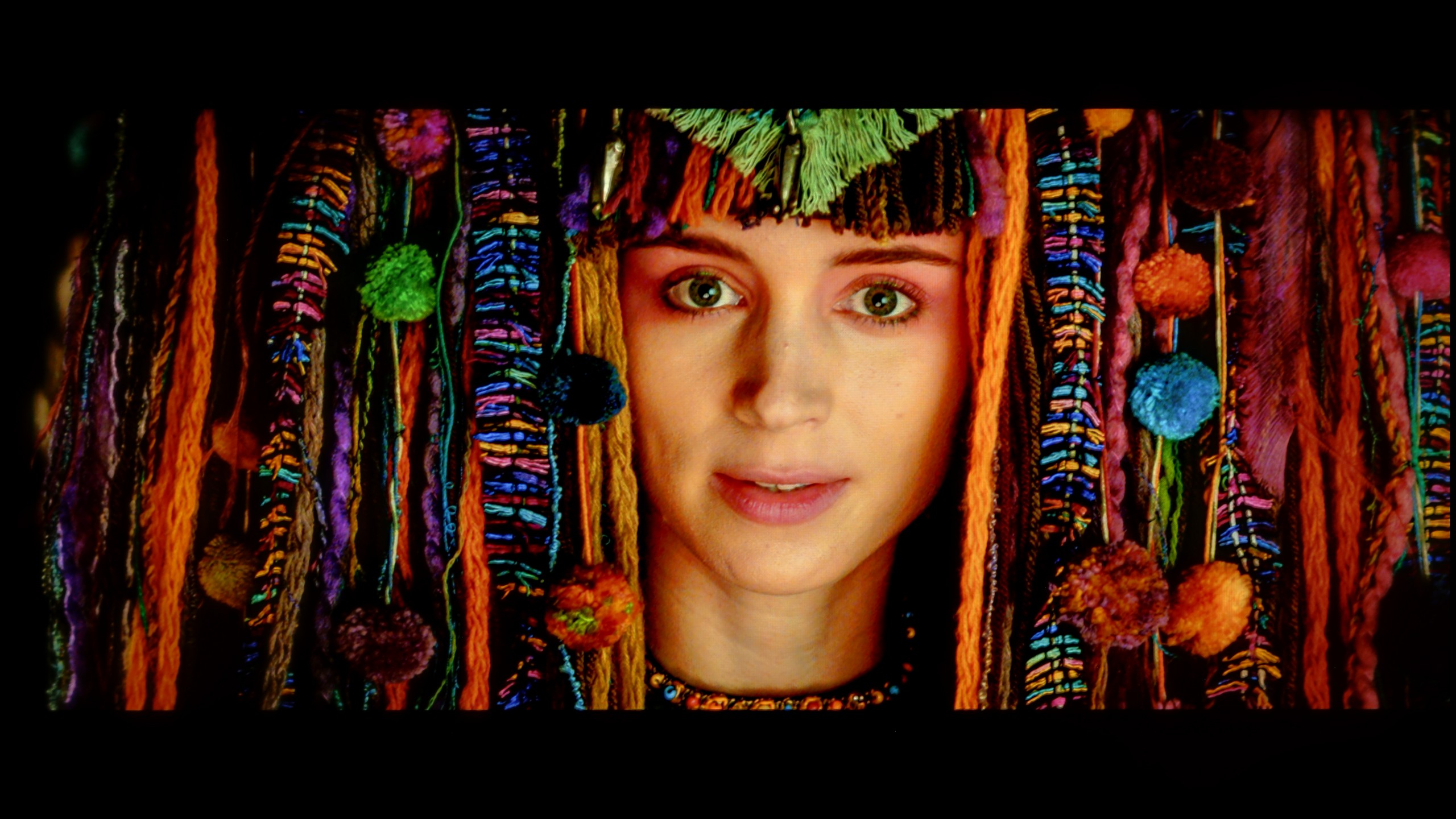
The calibration process of the Sony Bravia 8 television resulted in significant improvements in image quality. The white balance was notably enhanced for both SDR and 4K HDR content, with minimal errors in the middle section of the graph. Gamma calibration was one of the biggest improvements, eliminating previous dips that had impacted brightness stability and the reproduction of detail in dark areas. The EOTF curve was also corrected, making bright elements appear more natural and improving the overall tonal balance.
However, the most attention should be given to colour reproduction, where some issues persist despite calibration. Sony has omitted the CMS system in this model, which would allow for more precise colour control. As a result, the Colour Checker test for 4K content still reveals significant colour inaccuracies. Despite these limitations, calibration is still recommended, as the improvements in brightness and contrast are noticeable and greatly enhance the overall image quality.
We must honestly admit – in the case of the LG C5, it took really very little to achieve an almost perfect picture. After calibration, we managed to achieve compliance with reference screens at a level that impresses even compared to much more expensive models. The picture after our adjustment looks exactly as filmmakers and series creators would want it – without color distortions, with natural depth and subtle texture. LG has done a great job this year regarding factory settings and calibration potential. Hats off!
Smoothness of tonal transitions
5/10
8.2/10





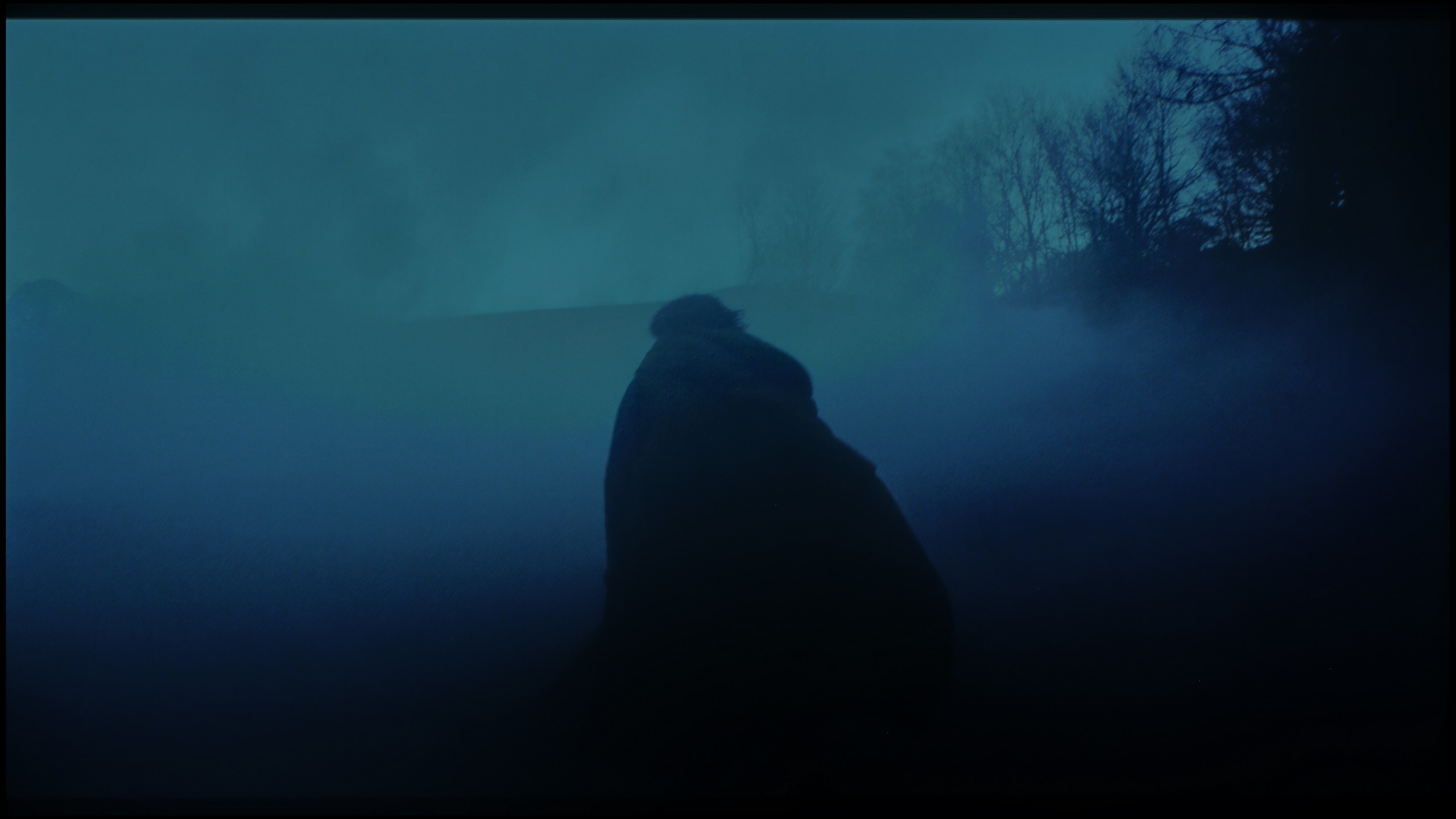

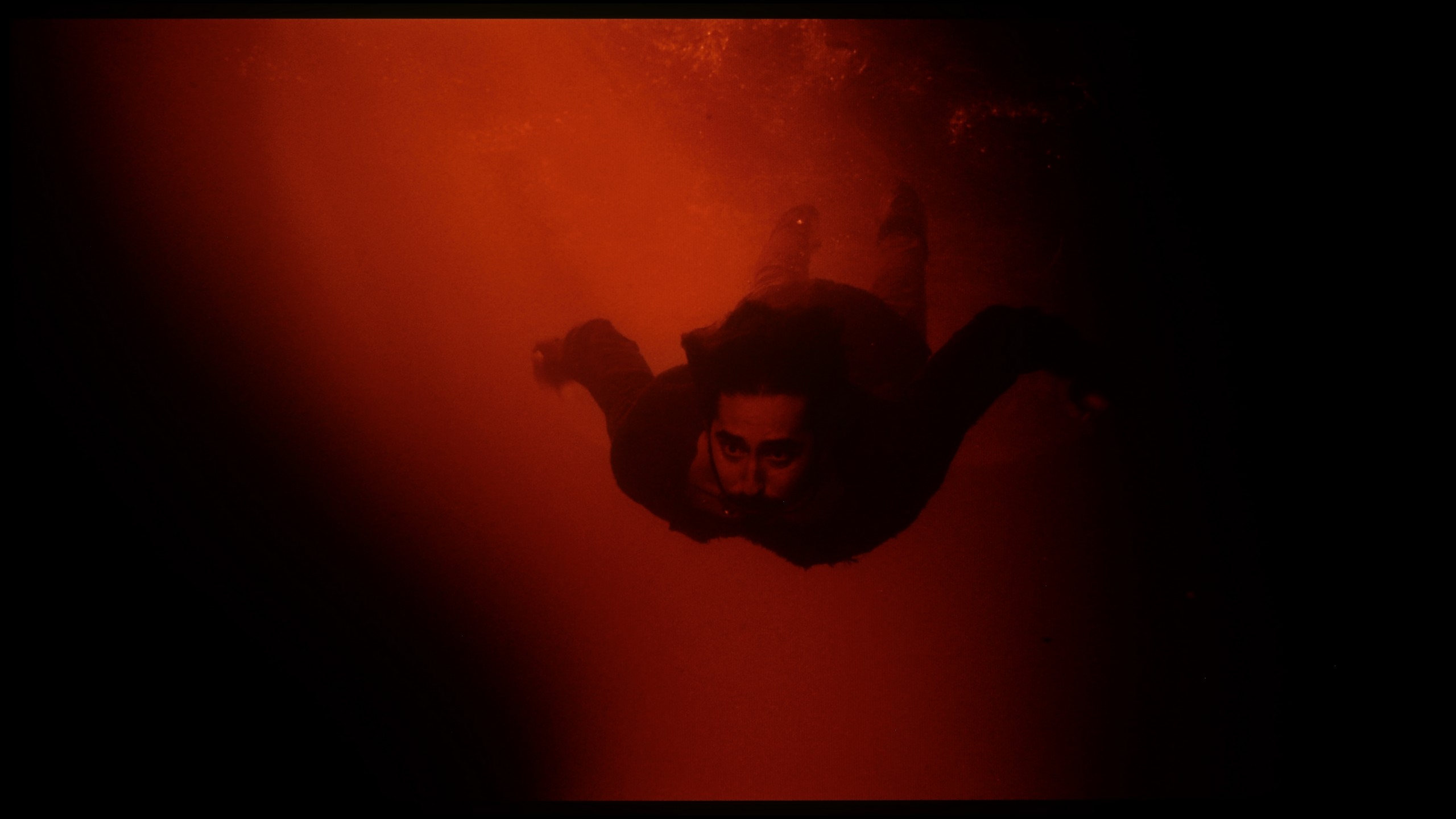




In 4K materials, the gradation is notably poor and disappointing. Visible seams are apparent in dark and light colours, detracting from the image quality and diminishing the overall viewing experience of high-resolution content. This is a notable weakness, as Sony's processors have typically excelled in this area, but it appears to be a failure this time.
WOLED TVs have not been known for their perfect smoothness in tonal transitions until now. One could often notice subtle stripes between colors – especially in darker parts of the image – which made it seem that colors did not transition smoothly but rather "stepped" slightly. This year, LG has made significant progress. In the C5 model, this issue has largely been eliminated. Yes, in very dark scenes, one can still see subtle boundaries between colors, but they are non-intrusive enough that hardly anyone except for more demanding viewers will pay attention to them. For most users, the smoothness of tonal transitions in the C5 will simply be impeccable.
Image scaling and smoothness of tonal transitions
6.1/10
7.8/10
Smooth transition function

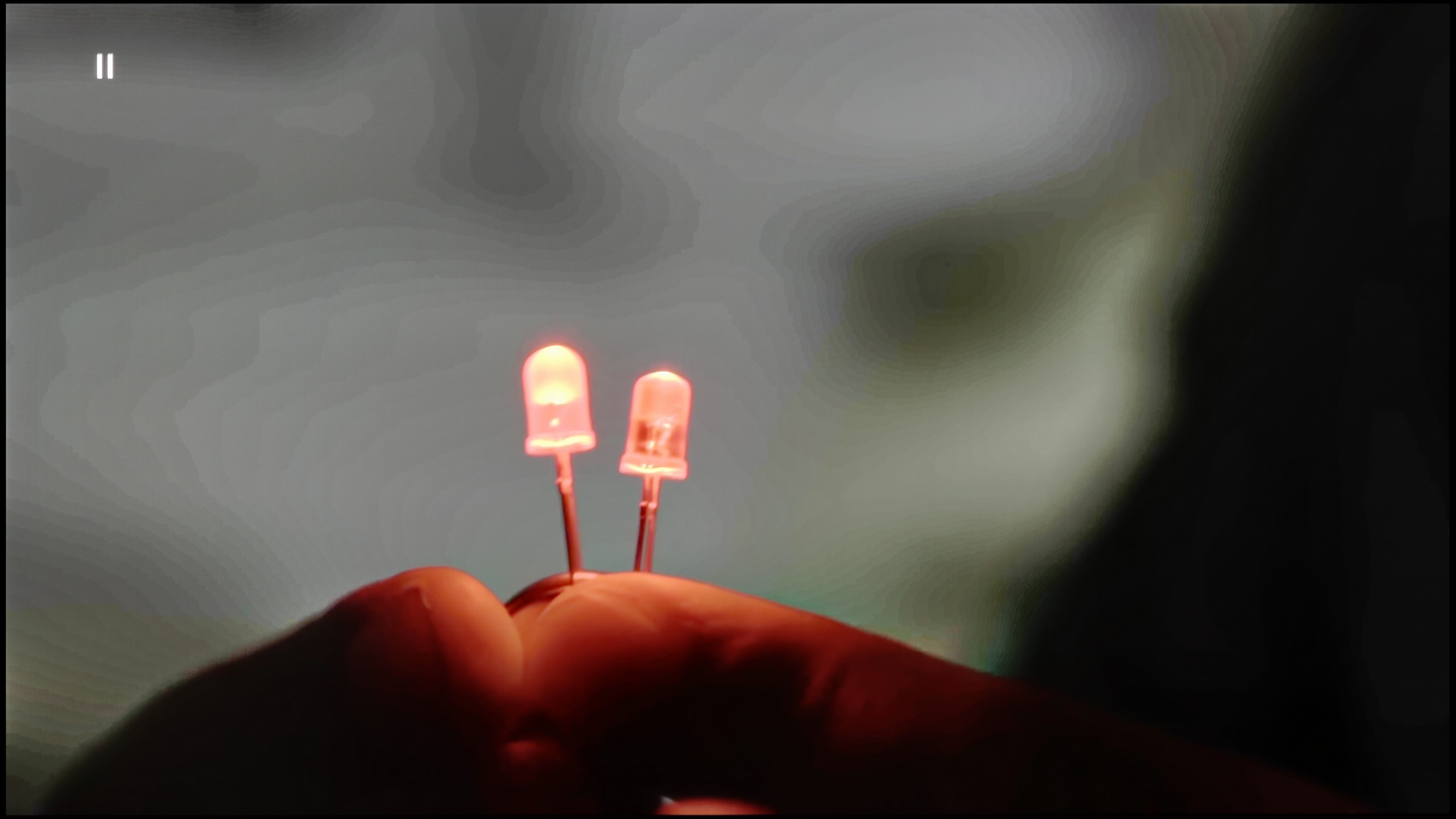
Image without overscan on the SD signal


The fluidity of tonal transitions in lower-quality materials on the Bravia 8 is lacking. Unfortunately, the gentle gradation function, which was available in previous models, is missing, which is a significant drawback. The digital noise reduction feature can improve tonal transitions, but it often removes fine details, such as clouds in scenes from The Martian, which may not be to everyone's taste. On the other hand, the digital processing in the Sony XR80 is quite effective. In test scenes, it performed well without noticeable flaws, and the branches in the background remained smooth without jagged edges. This indicates that the Bravia 8 is capable of handling complex low-resolution image details with relative ease.
LG C5 handles lower-quality materials really well. One of the main issues older WOLEDs faced was posterization – unwanted "steps" in color transitions. The C5 uses a system feature to smooth these transitions, which works surprisingly effectively. The banding effect is almost completely eliminated, and the image gains consistency. Compared to last year's model, we feel that this feature works slightly weaker – but the good news is that it does not compromise the structure of the image. Film grain, textures, and details remain on the screen – nothing is smoothed out forcefully.
The C5 also does a great job of enhancing the quality of older recordings. Thanks to the α9 Gen6 processor (8th gen), "scaling to 4K" performs really solidly. The image is clear, the details are sharp, and the only minor drawback might be slightly visible jaggedness on some edges. However, there is no issue with overscan here – the image is not artificially cropped or shifted, which is a significant plus and still isn’t a given.
Blur and motion smoothness
8.5/10
8.5/10

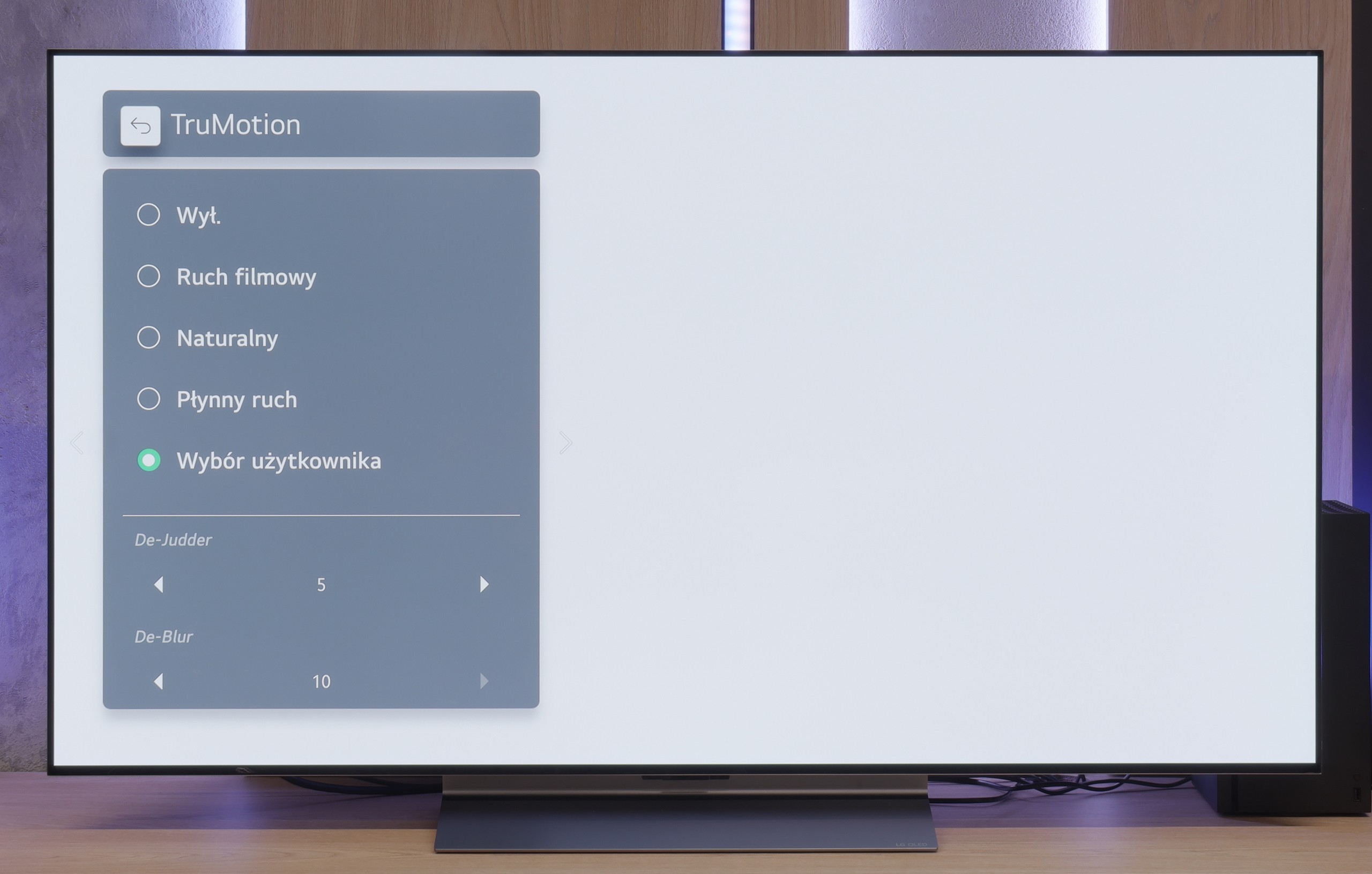
Blur (native resolution, maximum refresh rate):



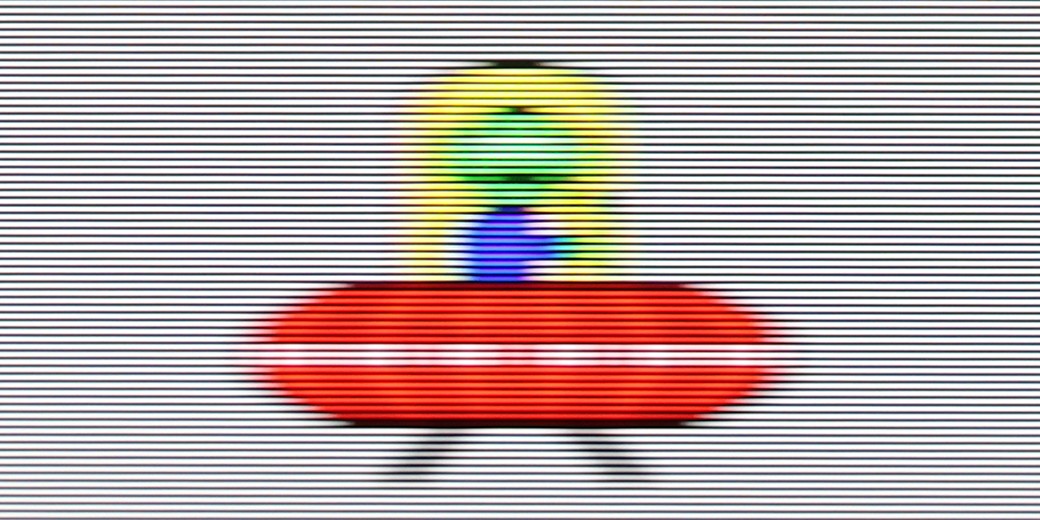


Blur (BFI function enabled):
Image flickers in this mode



Image flickers in this mode
The Sony Bravia 8 offers a maximum refresh rate of 120 Hz, ensuring smooth viewing of dynamic content such as sports and games, with sharp and fluid motion. For more demanding users, the Sony XR80 features an advanced motion smoothing system, divided into three settings: Smoothness (Film), Smoothness (Camera), and Clarity. The first two settings adjust the level of blur and smoothness, while the Clarity setting will be discussed in more detail below. Each of these parameters can be customised to suit individual preferences, allowing users to fine-tune the settings for the optimal viewing experience.
The LG C5 is equipped with a 144 Hz panel, and this, combined with the practically zero response time of the OLED pixels, makes it one of the best screens for watching dynamic content. It doesn't matter whether it's sports, fast-paced games, or just action – the image is as sharp as a razor.
And what about movies in 24 frames? LG thought of that too. The built-in "TruMotion" smoother allows you to adjust the image to your own preferences. The "de-judder" slider increases the smoothness in movies, while "de-blur" gently reduces blurring – although to be fair, it is almost imperceptible here anyway.
Console compatibility and gaming features
8.1/10
10/10
- ALLM
- VRR
- VRR range48 - 120Hz40 - 144Hz
- Dolby Vision Game Mode
- Correct implementation of HGIG
- 1080p@120Hz
- 1440p@120Hz
- 4K@120Hz
- Game bar

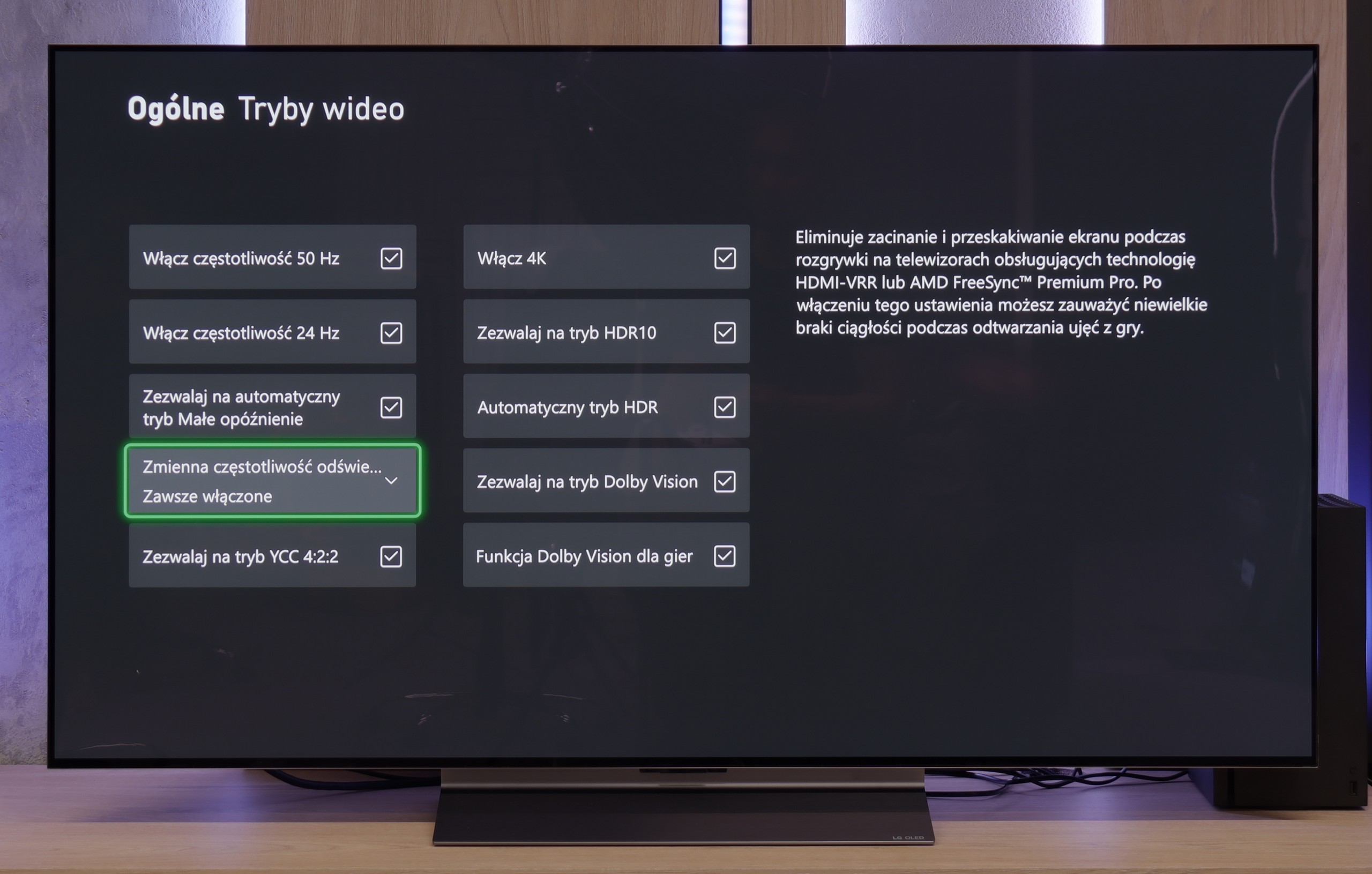

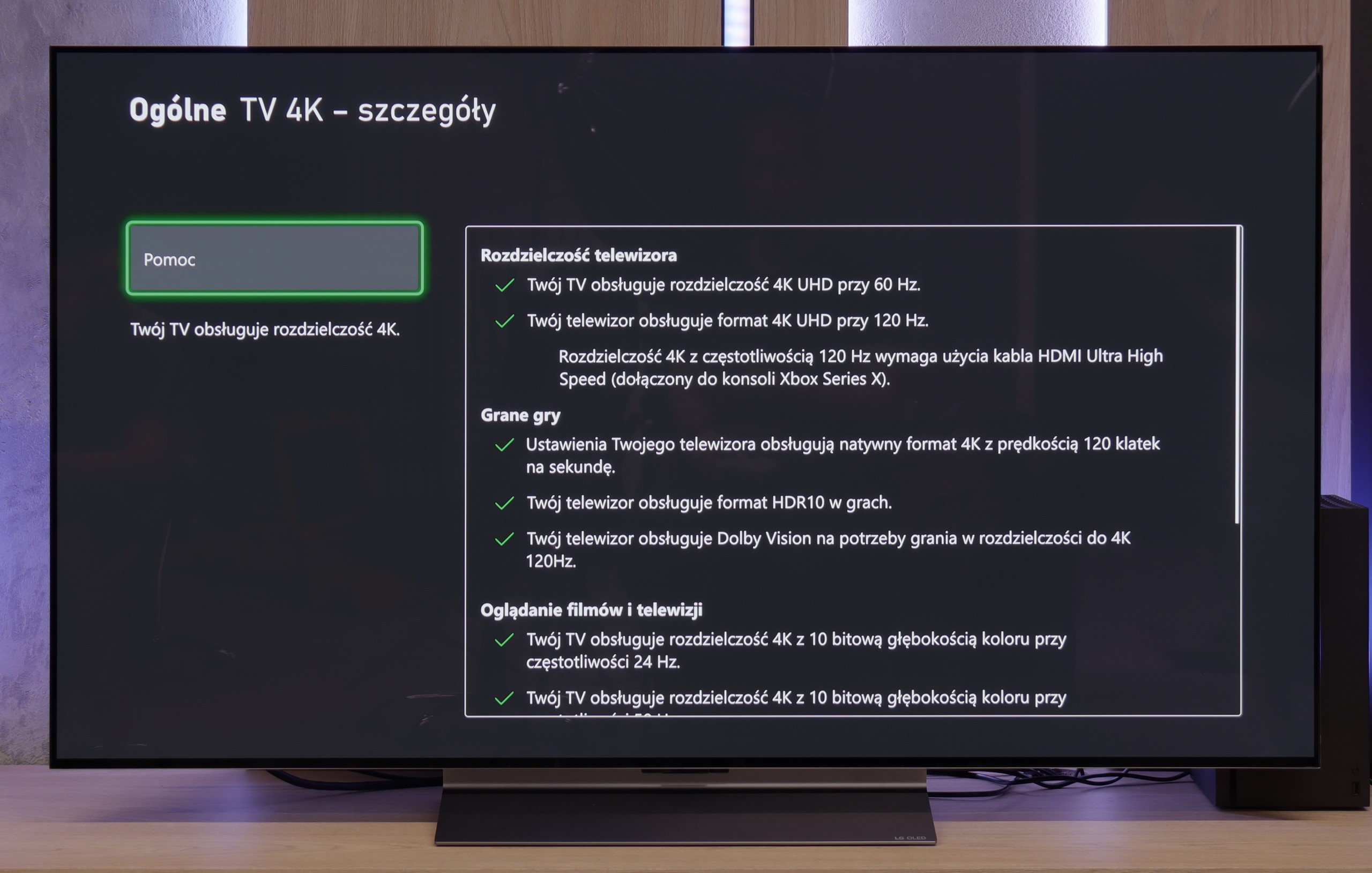

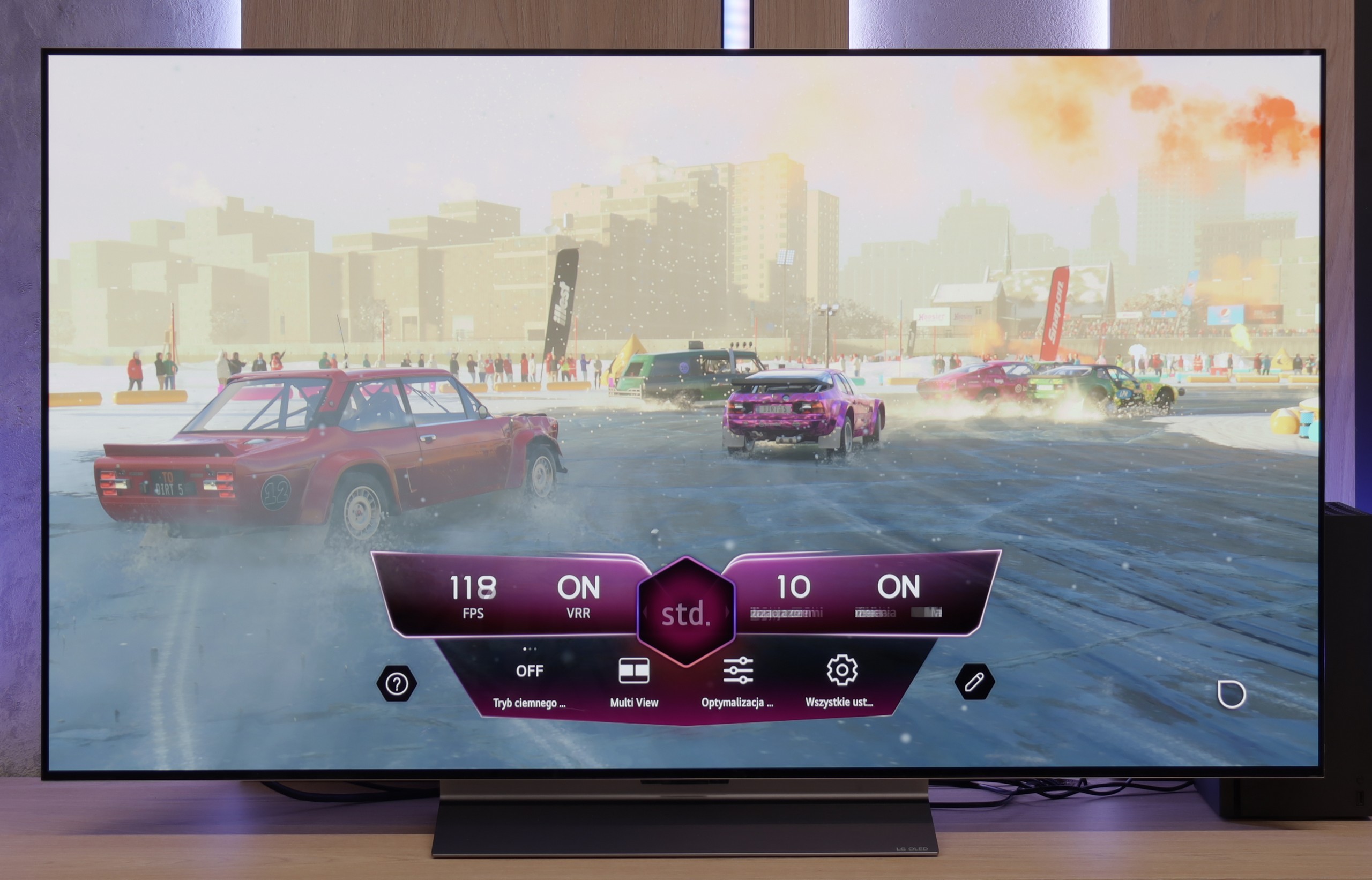

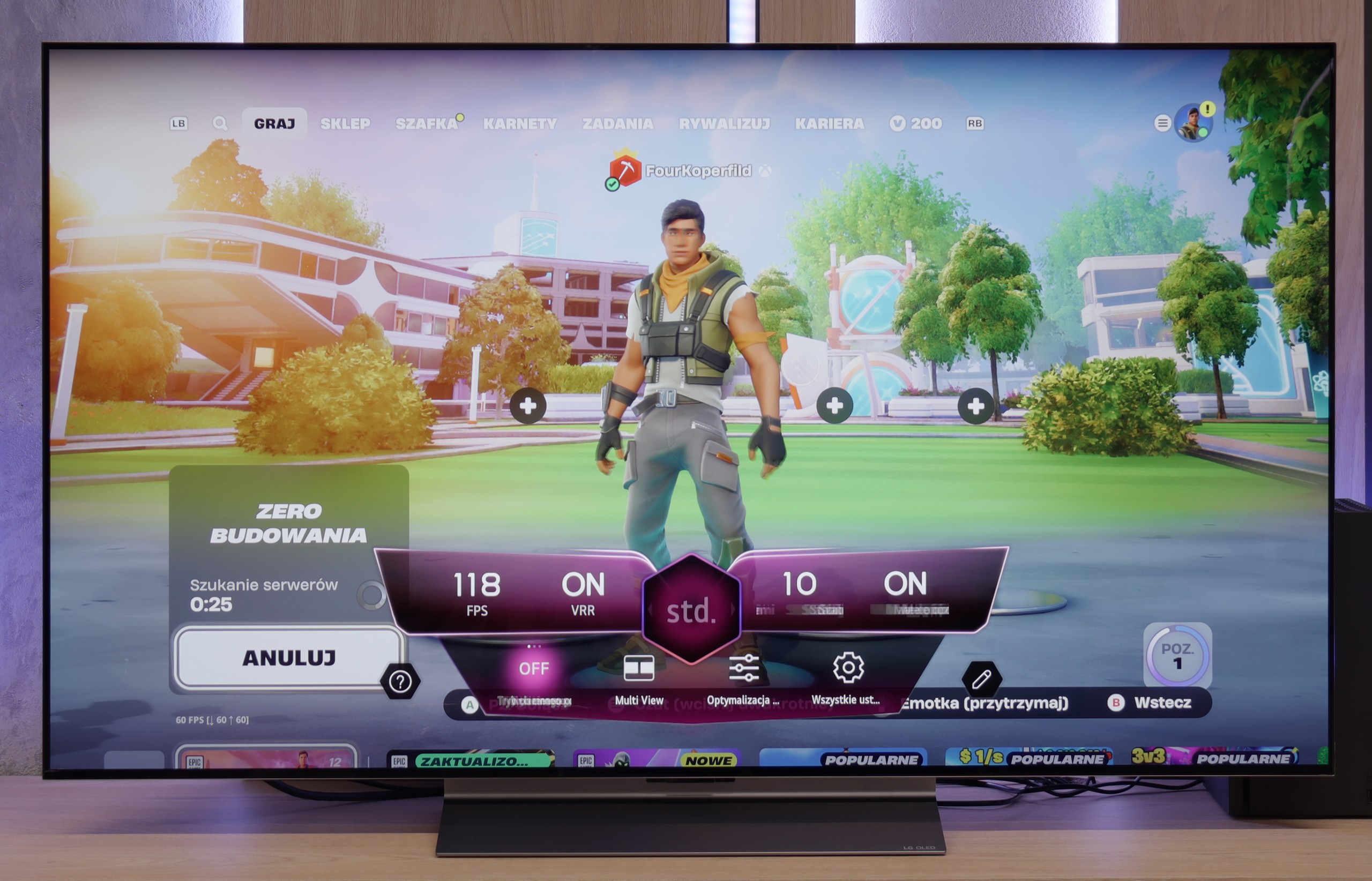
The Sony Bravia 8 has greatly improved its compatibility with consoles compared to earlier models. It supports variable refresh rate (VRR), which eliminates screen tearing and can sync with graphics cards for smooth visuals. The Auto Low Latency Mode (ALLM) reduces input lag, a crucial feature for fast-paced games. Additionally, Dolby Vision with low latency enhances HDR effects, offering stunning visuals during gameplay.
The Sony XR80 also includes a Game Bar, which provides quick access to settings and monitoring tools during gaming. A notable feature is the option to enable a virtual crosshair on the screen, giving players a potential advantage in shooter games.
However, there are some drawbacks. The TV lacks support for 1440p@120Hz resolution, which would benefit users with less powerful graphics cards. Furthermore, the Sony XR80 has only two HDMI 2.1 ports, one of which is typically used for connecting an audio system via eARC, limiting the number of available ports for next-gen consoles.
LG C5 is a television designed with gamers in mind – and there’s not a hint of exaggeration in that. It's hard to find anything to criticize here. We have 144 Hz refresh rate, full support for VRR, ALLM, and up to four HDMI 2.1 ports with full bandwidth of 48 Gb/s. For those who have an Xbox, PS5, Nintendo, and a gaming PC all in one room – there are no limits, everything can be connected without any hassle.
The HDR configuration for gaming is also problem-free. The television properly supports the HGiG mode, which allows for an image consistent with the creators' intentions. For those interested, there’s also Dolby Vision in Gaming mode, though we still recommend HGiG as the most predictable and “pure” version of HDR for games.
The Game Bar is also included, which serves as the “command center” for the gamer. Everything that’s most important, from VRR settings, to picture modes, to frame rate information – is at our fingertips. The interface is simple and readable. It may look like something out of a space simulator, but it serves its purpose and just works; exactly as it should.
C5 is truly a complete package for every gamer.
Input lag
10/10
10/10
SDR
HDR
Dolby Vision
The low input lag on the Sony Bravia 8 is certainly a standout feature, with a remarkable 13 ms providing exceptional responsiveness. The Dolby Vision mode also deserves praise, as it performs exceptionally well on this model. Unlike many other manufacturers, where Dolby Vision often underperforms, it delivers its full potential here, enhancing the gaming experience.
The reaction time of the LG C5 to our movements with the controller is exemplary. Regardless of the selected resolution or frame rate, the delay is so low that it's practically imperceptible. Playing on this television is simply a pure pleasure. Some delay is introduced by the Dolby Vision mode, which shouldn't be a surprise – this applies to virtually every television on the market equipped with this mode. Nevertheless, even with Dolby Vision active, the input lag remains low enough that gameplay is still smooth and responsive.
Compatibility with PC
7.6/10
8.6/10

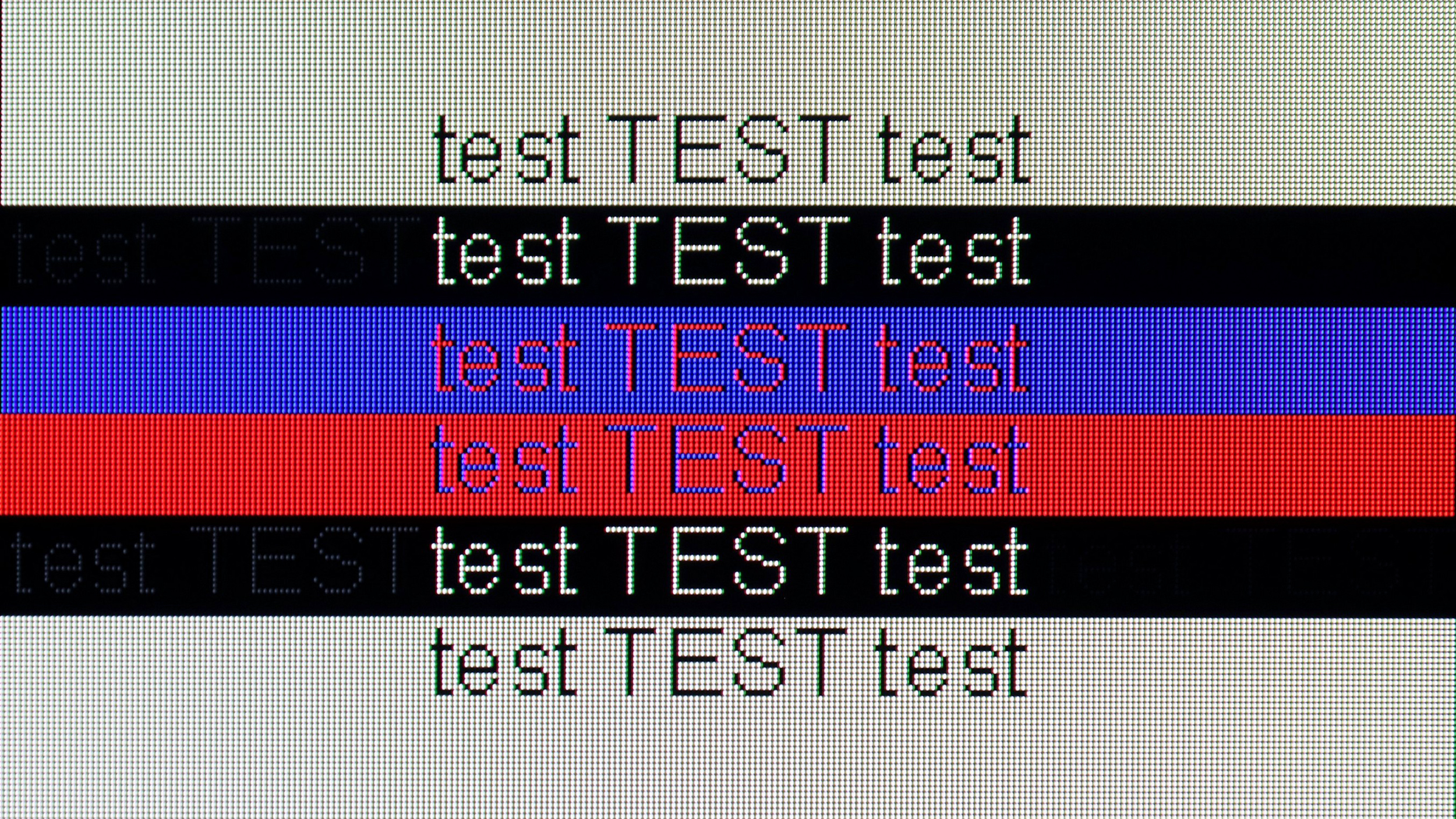
The Sony Bravia 8 works very well with computers, much like most WOLED matrix televisions. Font readability is excellent, making it comfortable to work with documents or browse websites. The impressive 5 ms input lag ensures excellent responsiveness during gameplay. The only downside is that fonts on a dark background appear slightly dimmed.
C5 – as we wrote – is a television created for gamers, so playing even on a computer is truly enjoyable. The 144 Hz panel, low input lag, and original G-Sync certification confirm this.
When it comes to work – it's also very good. The fonts are readable, the interface clear, but it's important to remember that we are dealing with a WOLED panel and a WRGB subpixel layout. (slightly visible shadows behind the font). Therefore, if someone plans to place the C5 on a desk in smaller sizes like 42 or 48 inches for everyday office work, it's worth checking it out with their own eyes beforehand. For occasional desktop use and, above all, for gaming – there is no cause for concern.
Viewing angles
7.3/10
7.4/10
The viewing angles on the Sony Bravia 8 are excellent, as expected from an OLED TV. The image retains its colours and contrasts even when viewed from wide angles. The only models that outperform it in this area are those equipped with MLA (Meta-Lens Array) technology and QD-OLED, which provide even wider viewing angles and superior image quality at extreme angles.
The viewing angles on the LG C5 are nearly perfect. Although they fall slightly short compared to technologies like QD-OLED or WOLED with micro lens MLA, the picture quality at high angles still makes a great impression. Colors remain vibrant, and the screen doesn't lose much of its brightness even when set at a more demanding angle.
Addressing the questions that circulated last year regarding the C4 model – in the case of the C5, we did not notice any green tinting, pinkness, or other effects that can be read about online. The picture at an angle looked really clean.
TV efficiency during daytime
5.6/10
6.2/10

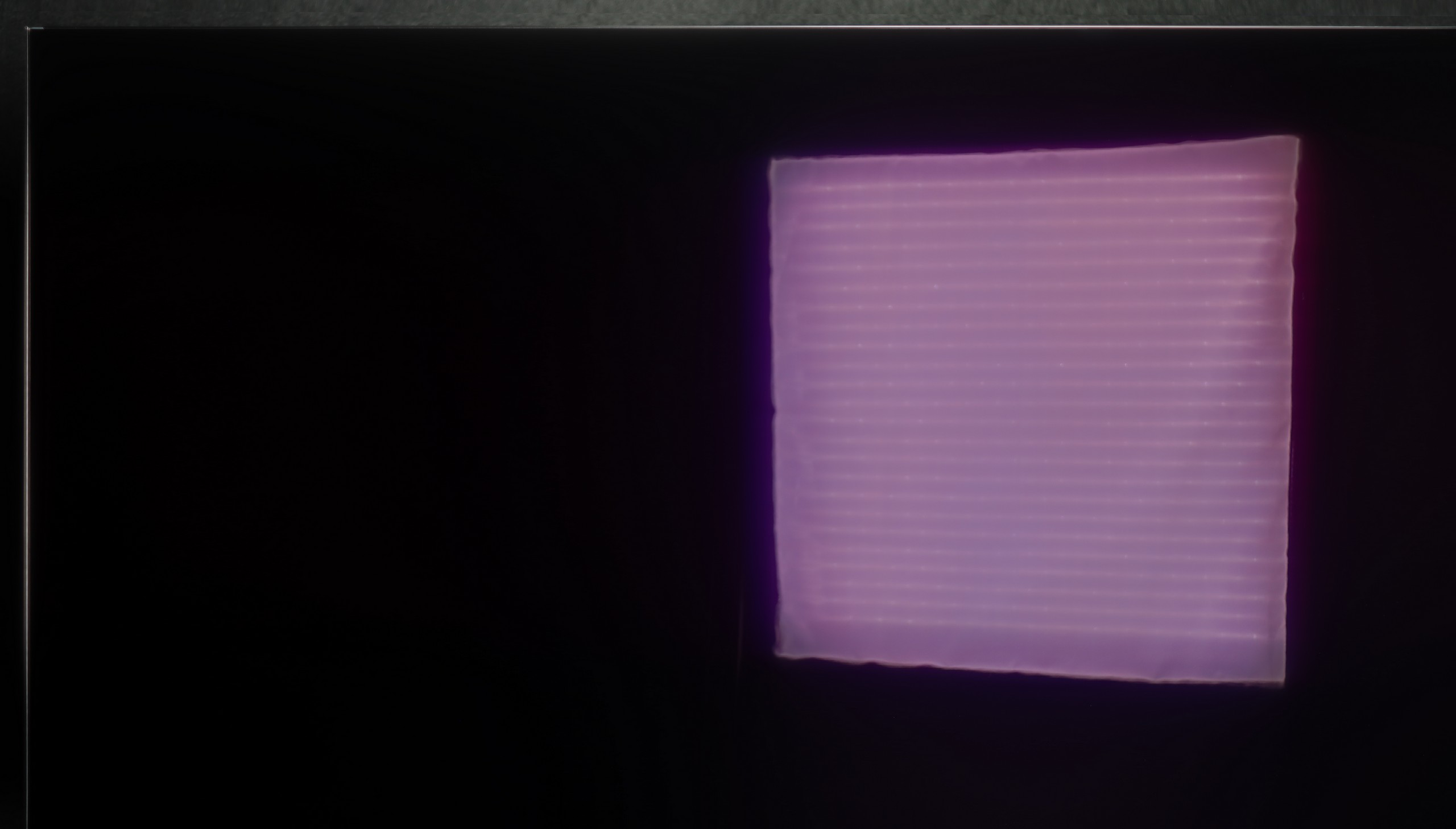

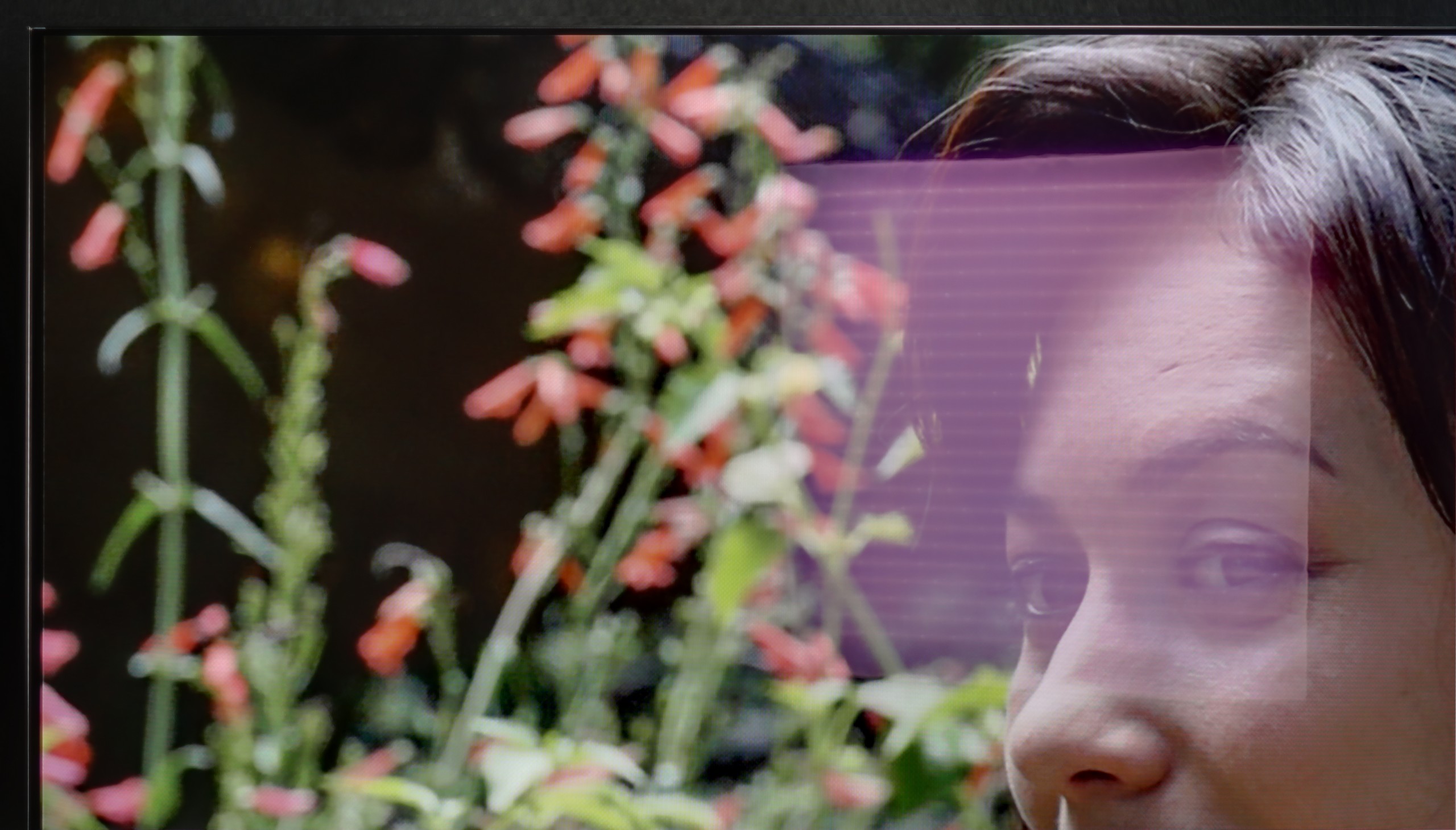
Matrix brightness
Average luminance SDR
LG OLED C5: 435 cd/m2
Sony Bravia 8 (XR80): 335 cd/m2
The glossy matrix on the Sony Bravia 8 effectively reduces reflections, although they take on a slightly bluish hue. However, the brightness level of 330 nits is not particularly impressive, making this TV better suited for evening viewing. During the day, to ensure optimal image quality, it's advisable to close the windows to minimise the impact of external light.
LG C5 is one of the brighter OLED TVs on the market, so it should perform well in moderately bright rooms without major issues. The average brightness in SDR mode is around 450 nits – this is a sufficient value for the picture to remain readable even during the day. Importantly, the blacks do not lose depth and do not turn "gray," which can still be a concern with QD-OLED panels.
A bigger challenge, however, may be reflections. The WOLED panel used in the LG C5 has a glossy finish typical of this technology, which only partially diffuses reflections. In a well-lit living room with large windows, you can see your reflection on the screen – slightly muted, but still visible. In a very sunny room, it may turn out that curtains or shades will be necessary to fully enjoy the great picture quality.
Details about the matrix
Subpixel Structure:

Panel uniformity and thermal imaging:

TV features
9.4/10
7.9/10
- HDMI inputs2 x HDMI 2.0, 2 x HDMI 2.1 48Gbps0 x HDMI 2.0, 4 x HDMI 2.1 48Gbps
- Other inputsIR (remote)
- OutputsToslink (Optical audio), eARC (HDMI), ARC (HDMI)Toslink (Optical audio), eARC (HDMI), ARC (HDMI)
- Network InterfacesWi-Fi 2.4GHz, Wi-Fi 5GHz, Ethernet (LAN) 100MbpsWi-Fi 2.4GHz, Wi-Fi 5GHz, Ethernet (LAN) 100Mbps
- TV receptionDVB-T, DVB-T2, DVB-S, DVB-S2, DVB-CDVB-T, DVB-T2, DVB-S, DVB-S2, DVB-C
Classic features:
- Recording to USB (terrestrial TV)
- Recording programming
- Picture in Picture (PiP)
- RF remote control (no need to aim at the screen)
- Backlit remote control
- Teletext
- Audio only mode
- Bluetooth headphones support
- Simultaneous Bluetooth headphones & TV audio
Smart features:
- AirPlay
- Screen mirroring (Windows Miracast)
- Voice search
- Voice search in native language
- Ability to connect a keyboard and mouse


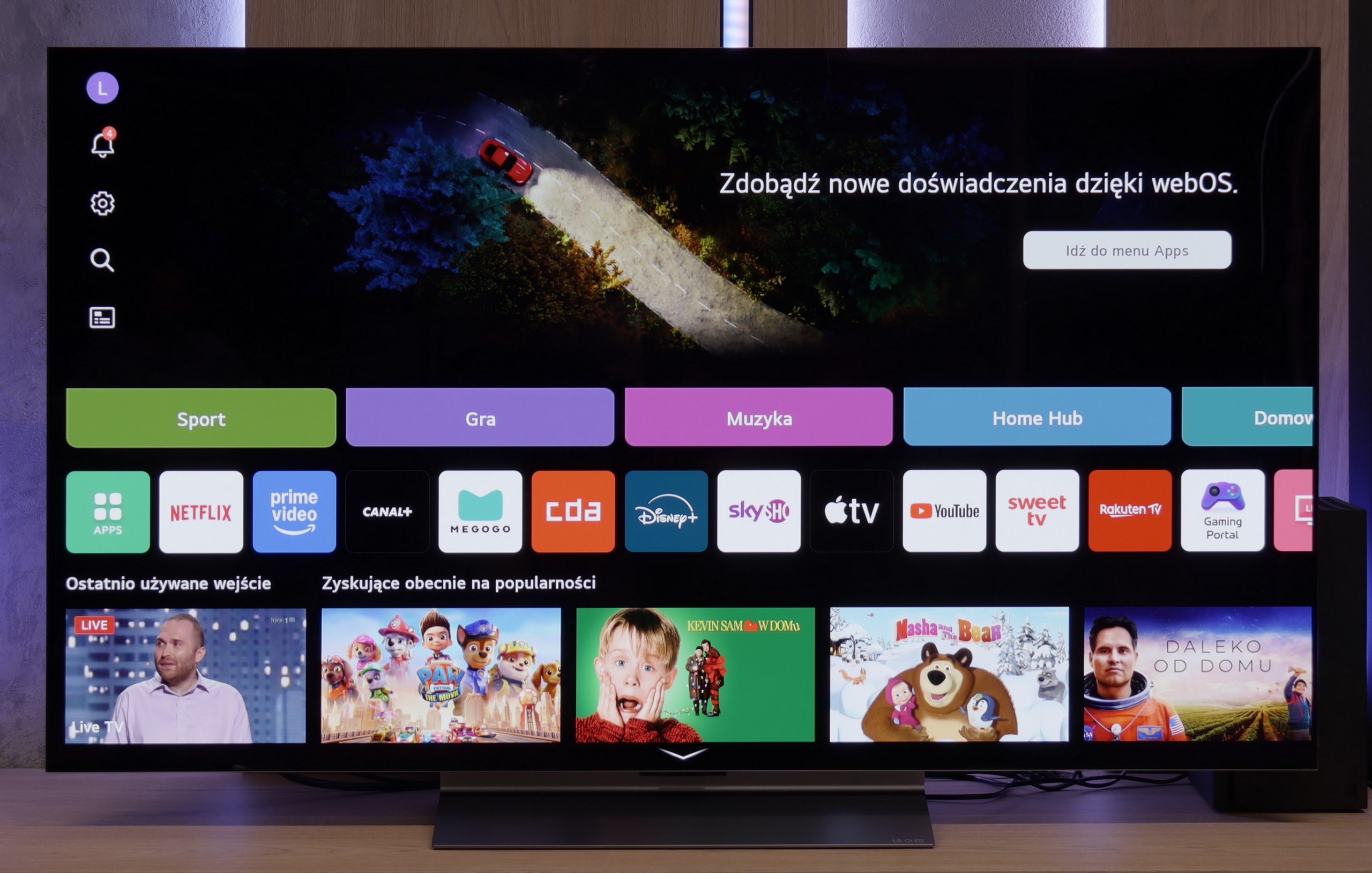
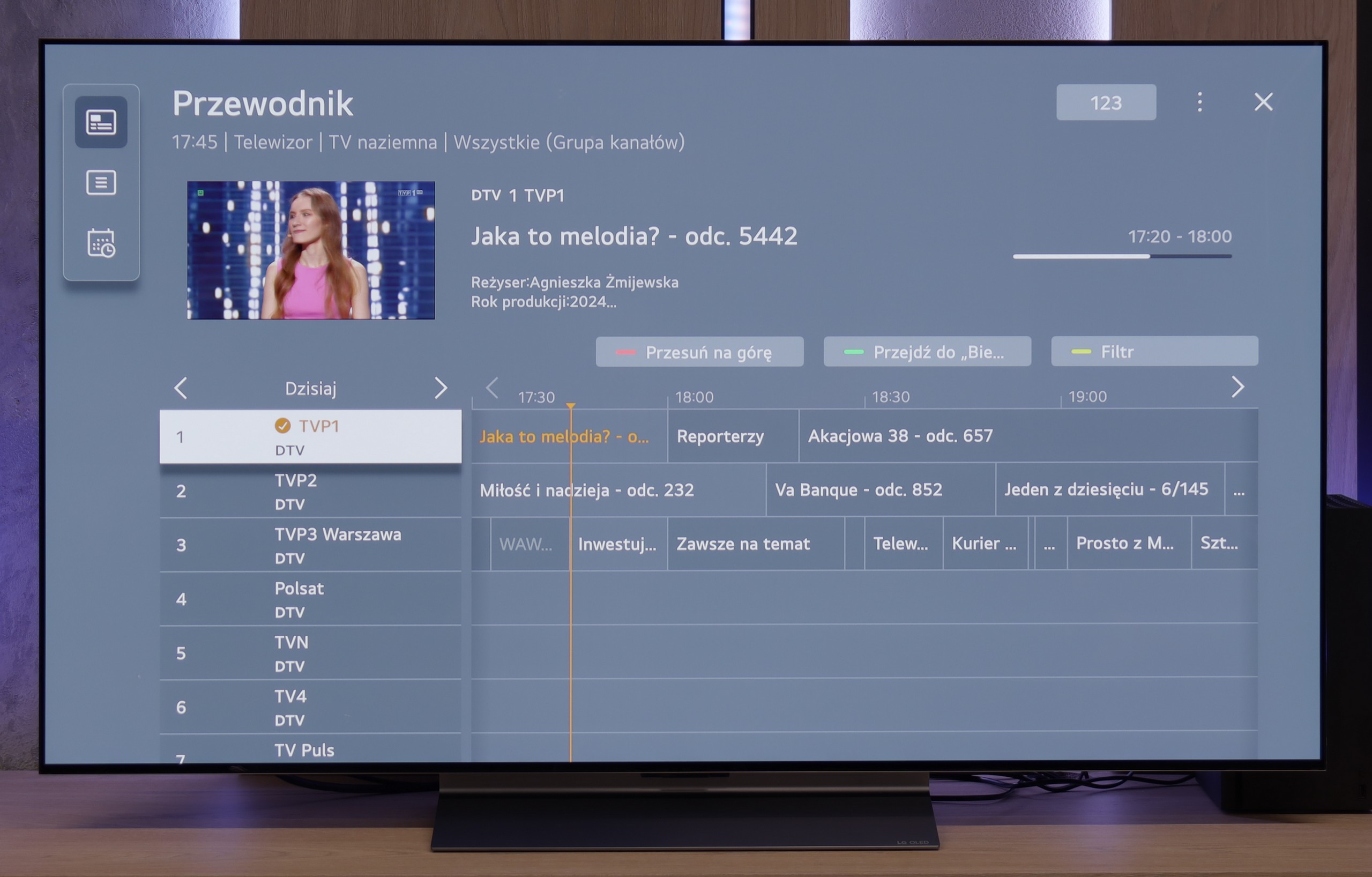
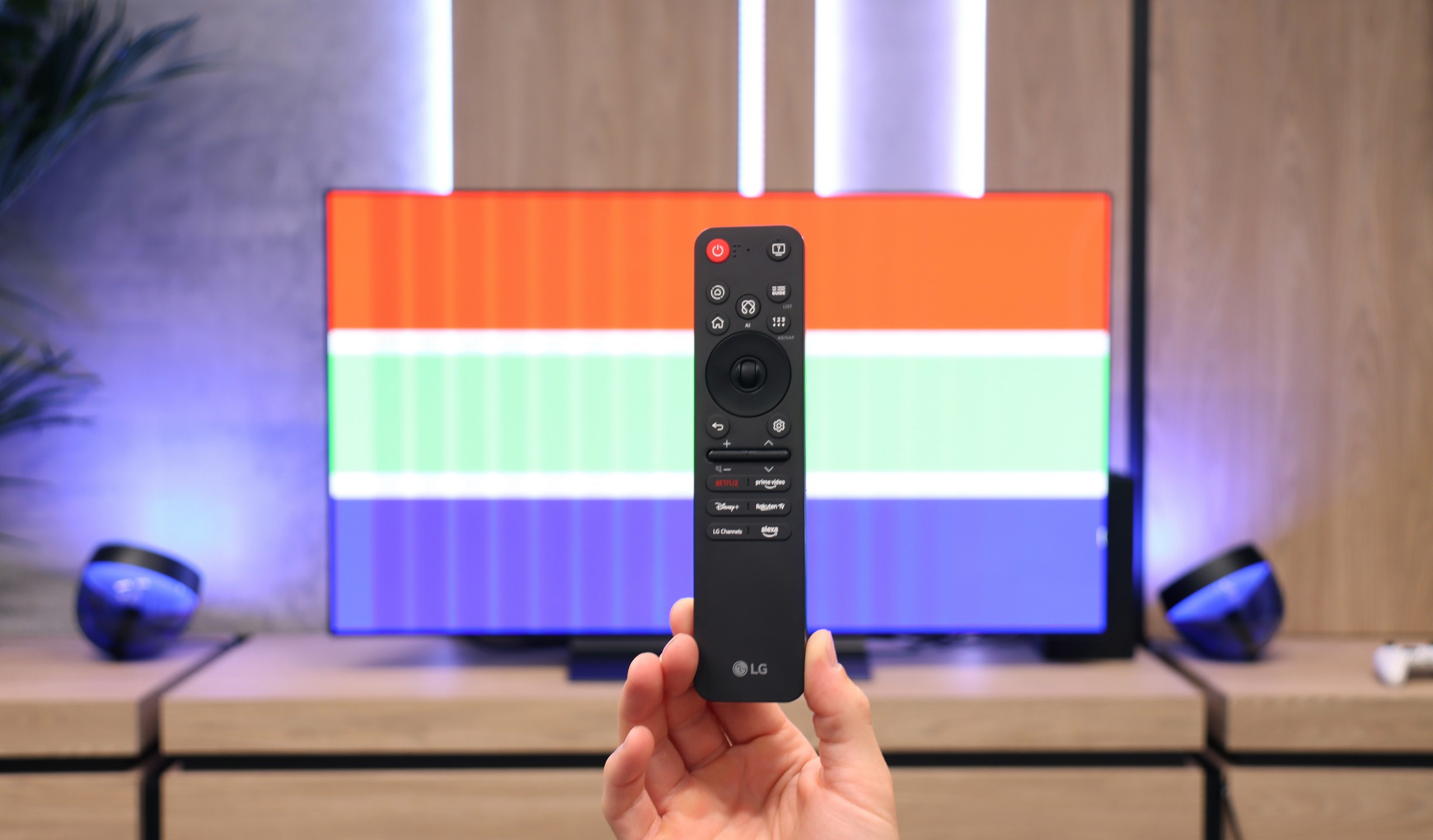
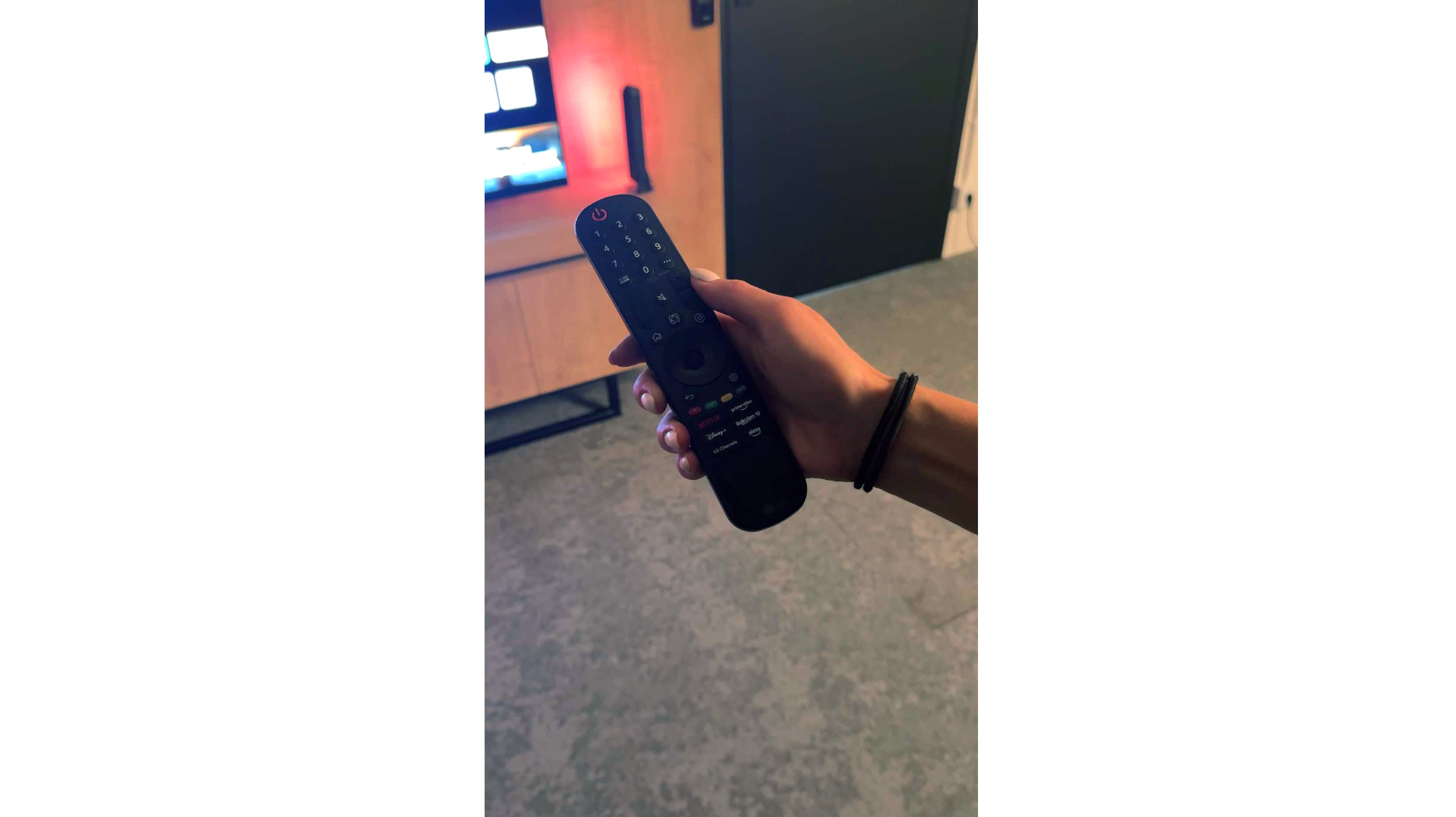
The Sony Bravia 8 runs on the Google TV system, offering an intuitive and user-friendly interface with access to an extensive range of applications. The interface is well-designed, with easy access to apps and features. The remote, similar to those from Korean competitors, can be charged via a USB-C port and is backlit, making it much easier to use in low-light conditions.
The TV provides a broad range of features that will satisfy most users. The Sony XR80 allows for program recording and easy connection to external devices via Bluetooth. However, it lacks the Picture-in-Picture (PiP) feature, which would enable simultaneous viewing of two image sources—a feature that could be useful in certain situations.
The design of the television is impressive, featuring a sturdy metal frame that adds an elegant touch. It stands on two adjustable feet, allowing for customisation of both width and height, making it easy to place a soundbar beneath the screen. While the Sony Bravia 8 is not the thinnest OLED on the market, its high-quality materials and meticulous finish ensure it presents well.
Classic TV Features:
In terms of classic television features, the LG C5 performs really well. Here we have the option to record programs to USB from built-in DVB-T(2) tuners, support for teletext, an EPG program list, as well as seamless pairing of headphones via Bluetooth. For many users, these are still very important elements of daily TV usage – and here LG does not lack anything except for the PIP function. It's worth noting the topic of the remote control, or rather... different versions of the remote. In our test, we used the C54 model, which came equipped with a new version of the Magic remote. It somewhat resembles Samsung's minimalist approach – lacking a numeric keypad or a "source" button, but it looks modern and is convenient for everyday use. On the other hand, other variants like the C5ELB may be sold with an older version of the remote – a more classic one, with a greater number of buttons and a numeric keypad. Some may consider it more practical, while others see it as outdated. In short: quite a bit of confusion, so it's worth checking the model suffix before purchasing.
Smart TV:
Regardless of the version of the remote, we operate the same system – WebOS. This is one of the most pleasant solutions in the world of Smart TV. The intuitive menu, fast performance, and support for popular features like AirPlay, screen mirroring, or voice assistant make the system very effective for daily use. Additionally, controlling the cursor using the gyroscope in the Magic remote remains one of the most convenient forms of navigation in televisions. There are really a lot of applications available – Netflix, Disney+, HBO Max, Apple TV, and many others. However, one must remember that this is not a system based on Android/Google TV, so it might happen that we simply won't find some less popular applications in the LG store.
Playing files from USB
8.7/10
8.8/10
Supported photo formats:
Maximum photo resolution:

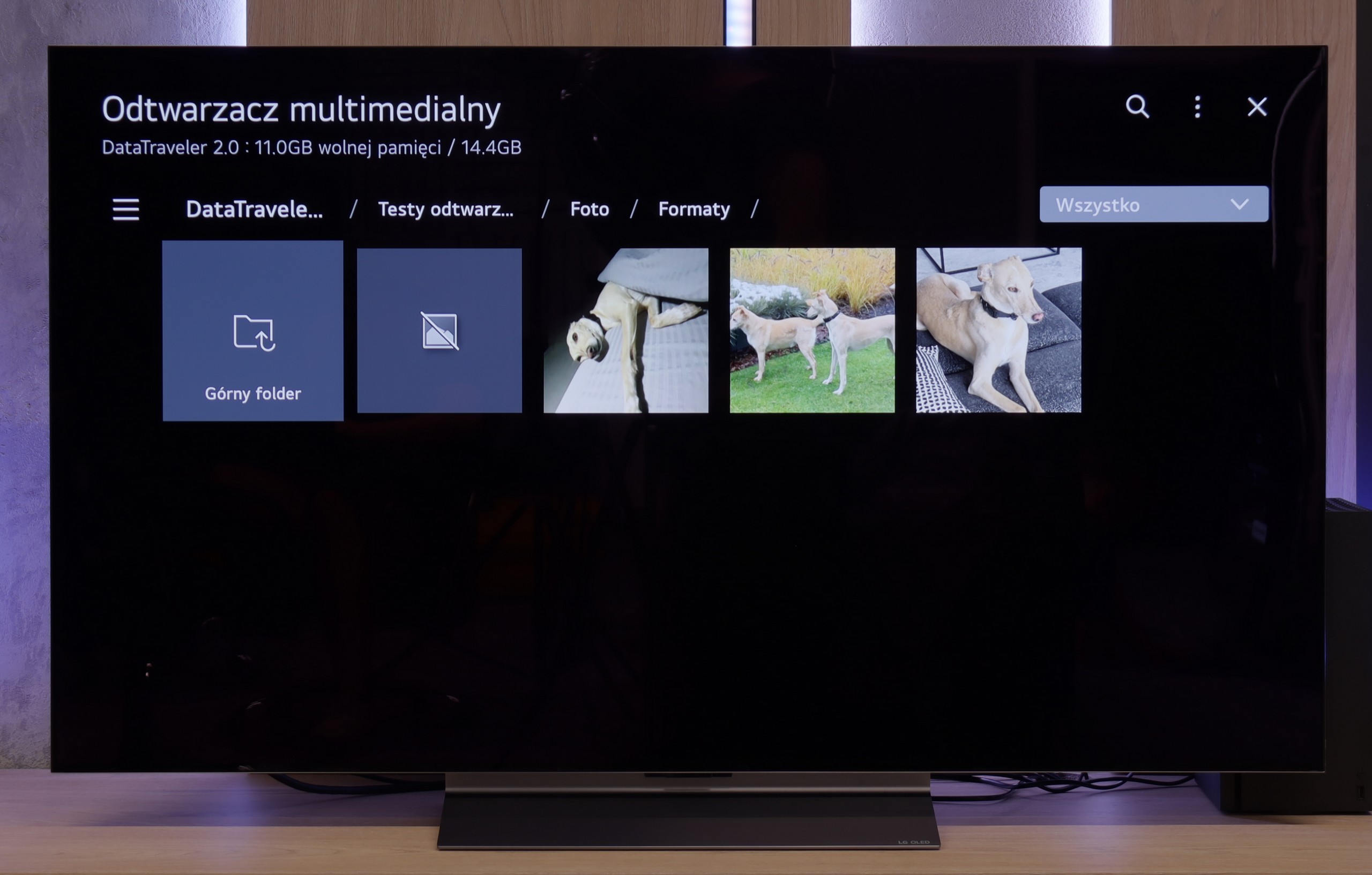
The Sony Bravia 8 will satisfy most users for multimedia playback. The built-in player supports the most popular video and audio formats, ensuring seamless access to a wide variety of content. While there are some limitations with photo playback, the Google TV system allows users to install alternative players that should address these issues.
The LG C5 is equipped with a quite decent built-in media player that should meet the expectations of most users. It supports popular video and audio formats, handles SRT subtitle files, and opens most graphic files without major issues.
The interface itself is quite simple and intuitive – it doesn't surprise, but it also doesn't cause difficulties in everyday use. Of course, it's not on the level of external players or apps from Google TV, but for basic playback of movies from a flash drive or disk, it is more than sufficient.
Apps
9.6/10
9.1/10














































Sound
7.5/10
7.2/10
- Maximum volume-84dB
- Dolby Digital Plus 7.1
- Dolby True HD 7.1
- Dolby Atmos in Dolby Digital Plus (JOC)
- Dolby Atmos in Dolby True HD
- DTS:X in DTS-HD MA
- DTS-HD Master Audio
The Bravia 8 has a 50W sound system in a 2.2.1 configuration, featuring speakers mounted behind the screen under the Acoustic Surface Audio system. The sound is pleasant and well-balanced, perfectly complementing the image. In terms of audio format support, the Sony Bravia 8 performs excellently, playing all popular codecs without issues and delivering a rich, immersive audio experience.
For such a slim television, the LG C5 surprisingly delivers quite good sound quality. It has managed to fit a set of specific speakers into a thin housing, which produce clear sound with well-heard details and – surprisingly – a light but noticeable bass. For everyday viewing, it's more than sufficient, and in many cases, it can even be positively surprising. It's just a shame that this year, LG decided to completely abandon support for DTS codecs. For most people, this won't be an issue, but if someone uses Blu-ray discs and enjoys this format – especially in its more advanced versions – they may notice its absence. In such cases, the solution is an external amplifier or a soundbar with appropriate audio support.
Acoustic Measurements
No acoustic data
84dBC (Max)
75dBC


